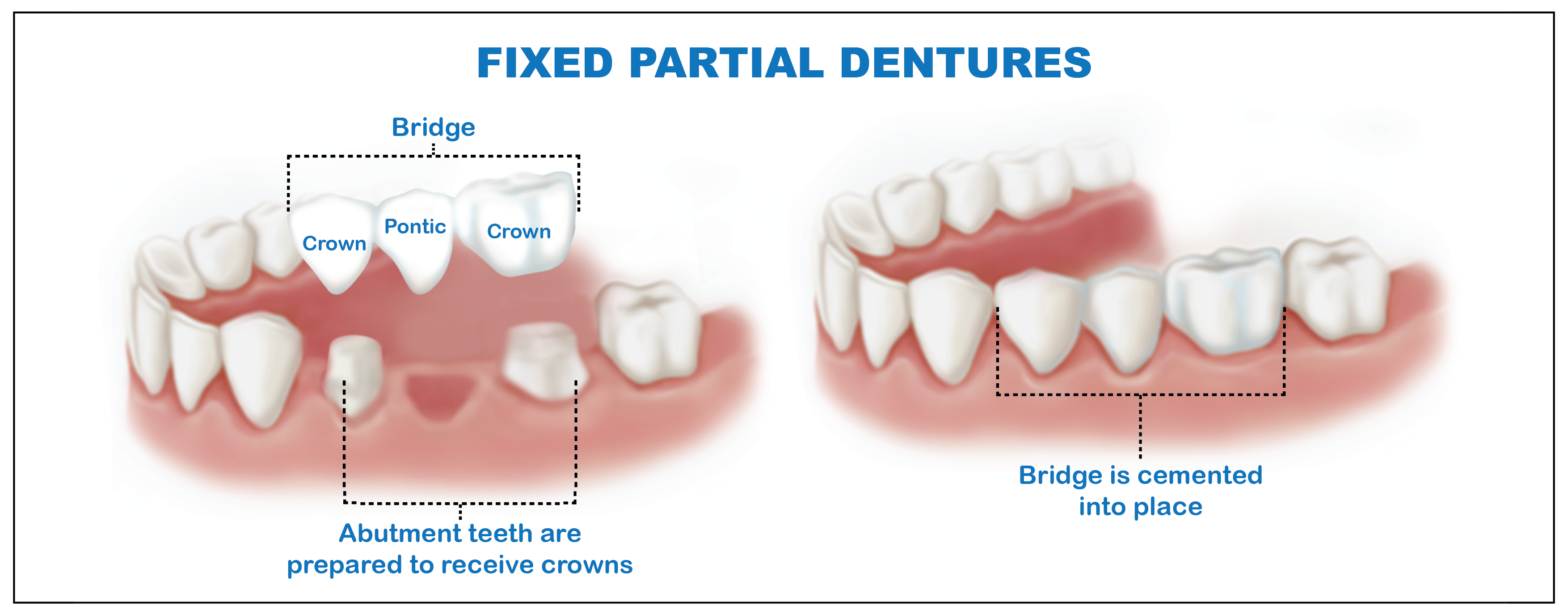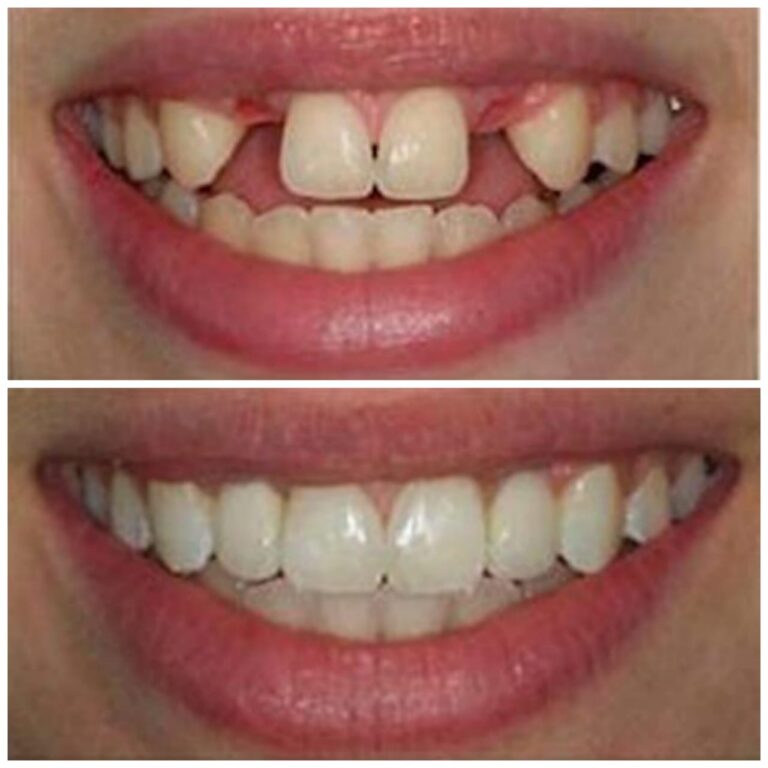
Fixed Partial Dentures
What is Fixed Partial Dentures?
Dental prostheses known as fixed partial dentures are made to replace one or more lost teeth by fastening to nearby natural teeth or dental implants. Fixed partial dentures provide a durable and long-lasting solution since they are firmly connected, in contrast to detachable dentures. Patients are able to confidently eat, speak, and smile again thanks to their restoration of the appearance and functionality of natural teeth.



Treatment for Fixed Partial Dentures
An extensive dental examination and consultation are usually the first steps in the treatment process for fixed partial dentures. Your dentist will examine your mouth, take impressions, and talk to you about what kind of fixed partial denture would be best for you during this first appointment.
Dental Bridge Preparation: The initial stage of treatment entails reshaping the neighboring teeth, called abutment teeth, to make room for the dental crowns that will support the fixed partial denture. Impressions of your teeth are then taken to create a custom-made bridge that fits perfectly in your mouth.
Temporary Bridge Placement: To preserve your smile and protect the prepared teeth while your permanent fixed partial denture is being fabricated in a dental laboratory, a temporary bridge is placed. This temporary solution enables you to go about your daily activities without discomfort.
Placement of the Permanent Denture: Your dentist will remove the temporary bridge and install the permanent denture when your permanent fixed partial denture is complete. Before affixing the denture to the abutment teeth permanently, the dentist will make sure that the fit, bite, and appearance are ideal. This last stage offers a long-lasting solution by securing the fixed partial denture in position.
The Fixed Partial Denture Process
The method for fixed partial dentures requires multiple steps, each vital for guaranteeing the success and life of the dental bridge.
First Consultation and Examination: Your dental professional will assess your oral health and go over your treatment options during this thorough examination. This is a critical step in figuring out whether fixed partial dentures are the best option for you.
Abutment Teeth Preparation: Preparing the neighboring teeth that will support the bridge is the next stage. In order to make a denture that fits perfectly, these teeth are altered, and imprints are taken.
Installation of Temporary Bridge: To preserve your smile and safeguard your teeth while you wait for the permanent denture, a temporary bridge is installed.
Placement of Permanent Denture: The permanent fixed partial denture is positioned as the last stage. Before firmly attaching the denture, your dentist will examine the fit and make any required modifications.
Before and After Process for Fixed Partial Dentures
It’s crucial to take care of any tooth problems and practice proper oral hygiene before receiving permanent partial dentures. To make sure your mouth is in the greatest possible shape for the surgery, your dentist might advise a cleaning or gum disease therapy.
Before the Process:
Consultation: Talk to your dentist about your alternatives.
Maintain good oral hygiene by looking after your teeth and gums.
Dietary Modifications: Steer clear of sticky or hard foods that can harm your teeth.
After the Procedure:
Rescheduled Appointments: It’s critical to have routine examinations to keep an eye on your dental health and denture condition.
Oral hygiene: To avoid plaque accumulation, brush and floss your teeth and dentures every day.
Dietary Habits: Steer clear of tough meals that can harm the abutment teeth or denture.
Following Repaired Partial Dentures
Proper maintenance and care are essential after having fixed partial dentures to ensure their longevity and the health of your remaining teeth. The following are some crucial aftercare pointers:
Maintain good oral hygiene by brushing and flossing your teeth twice a day. To prevent harming your dentures or abutment teeth, use a soft-bristle toothbrush and fluoride toothpaste. To clean the space between your denture and your gums, think about using an interdental brush.
Frequent Dental Visits: Make an appointment for routine dental examinations to keep an eye on the state of your fixed partial dentures as well as the surrounding teeth and gums. Professional cleanings could be advised by your dentist to avoid plaque and tartar.
Dietary Advice: Steer clear of chewing on hard objects like candy or ice because it can break your dentures. Maintain a healthy, well-balanced diet rich in fruits, vegetables, dairy products, and other nutrients to support oral health.
Handling Discomfort: Get in touch with your dentist right away if you encounter any discomfort or problems with your fixed partial dentures. Prompt action helps avert issues and guarantee the ongoing efficacy of your therapy.


Conclusion for Fixed Partial Dentures
Fixed partial dentures are a reliable and aesthetically pleasing method of replacing lost teeth. By choosing this process, you can restore your smile’s natural beauty and functioning, which will enhance your overall quality of life. Consult your dentist to determine whether fixed partial dentures are the best choice for you.
F.A.Q.
Srikanth Dental
Depending on oral hygiene and upkeep, fixed partial dentures can endure five to fifteen years. Their life can be prolonged with appropriate care and routine dental checkups.
You can have some discomfort at first until you get used to the dentures. After a brief while, the majority of patients find them pleasant. Your dentist should take care of any ongoing pain.
Eating most foods is possible even with fixed partial dentures. On the other hand, foods that are extremely sticky or hard should be avoided as they may harm the dentures or the teeth that support them.
Brush and floss your fixed partial dentures every day to keep them clean. To clean beneath the bridge and around the dentures, use an interdental brush or special floss.
